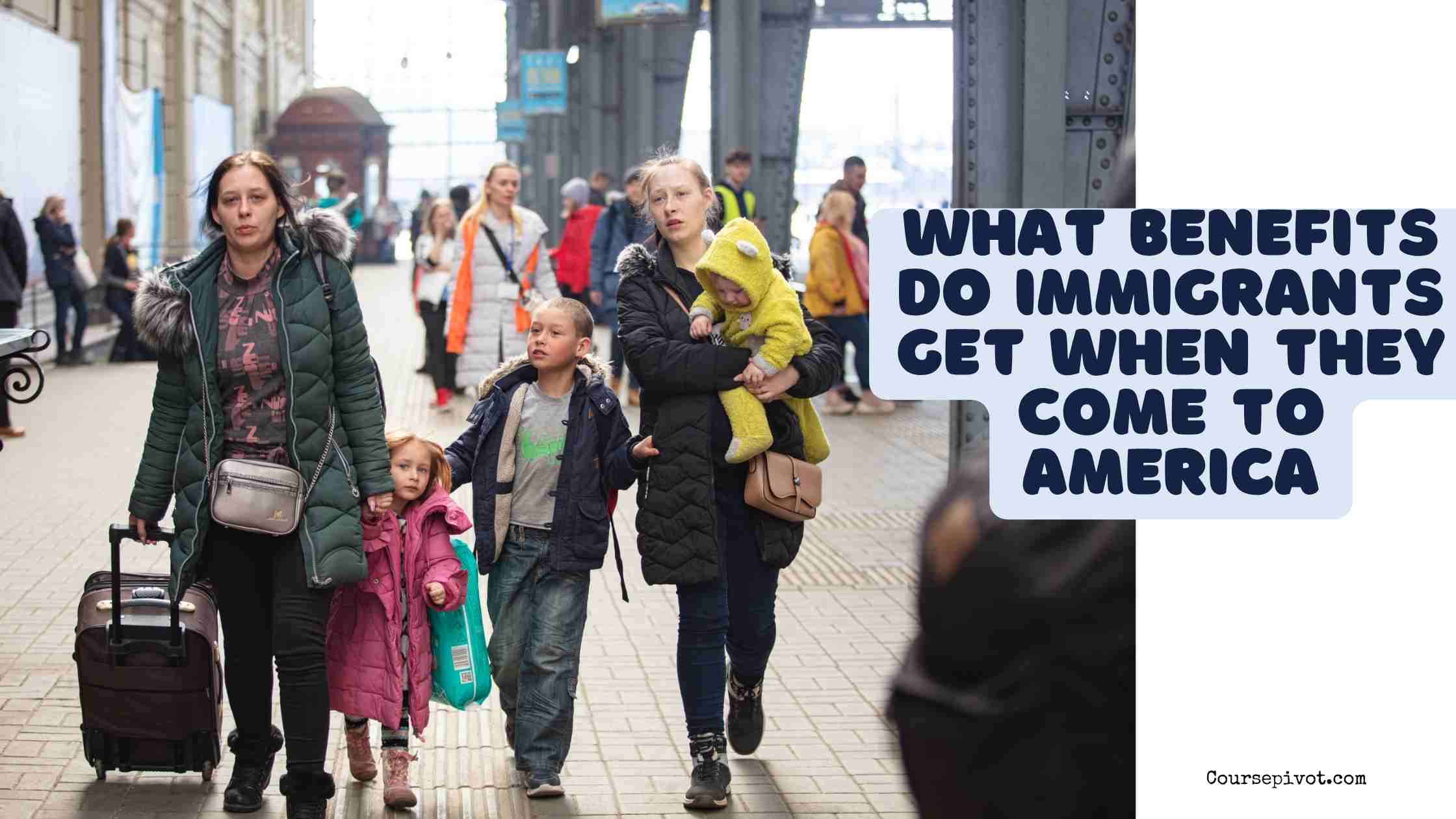
What Benefits Do Immigrants Get When They Come to America in 2025?
What kind of support can immigrants expect when arriving in the United States in 2025? The benefits available to immigrants depend heavily on their legal status, state of residence, and specific circumstances, with significant restrictions for undocumented immigrants and new policies under the Trump administration shaping access. From federal programs like emergency Medicaid to state-funded aid in places like California, the landscape is complex and evolving. This blog explores the benefits immigrants can access in 2025, their limitations, and key considerations, backed by 2025 data and real-world examples, with practical tips for navigating the system.
Table of Contents
Overview of Immigrant Benefits in 2025
Immigrants in the U.S. include legal permanent residents (LPRs), refugees, asylees, temporary visa holders, parolees, and undocumented immigrants, each with varying eligibility for benefits. A 2025 National Immigration Law Center (NILC) report notes that federal benefits, like Medicaid or SNAP, are largely restricted for undocumented immigrants and new LPRs, with only 20% accessing major programs due to the 1996 Welfare Reform Law. States like California, New York, and Illinois fill gaps with state-funded aid, covering 30% of ineligible immigrants, per Migration Policy Institute (MPI).
The Trump administration’s 2025 policies, including executive orders to curb benefits for undocumented immigrants, further tighten access, with 65% of federal programs reinforcing eligibility checks, per New York Times. For example, a January 2025 order aims to end “taxpayer-funded benefits for illegal aliens,” though enforcement details remain unclear, per White House. Understanding these benefits helps immigrants and advocates navigate a shifting system, enhancing personal performance in securing support. Let’s explore the key benefits and their eligibility criteria.
Federal Benefits Available to Immigrants
Federal programs offer limited benefits, primarily for qualified immigrants (e.g., LPRs, refugees, asylees), with strict rules:
- Emergency Medicaid: Available to all immigrants, regardless of status, for life-threatening conditions, covering 10% of undocumented healthcare costs, per NILC. For example, a 2024 Reddit user described emergency care for a migrant’s injury, fully covered.
- WIC (Women, Infants, and Children): Provides nutrition aid to pregnant women and young children, open to all statuses, with 25% of participants being immigrants, per USDA. Every state opts in, per NILC.
- School Meals: Free or reduced-price breakfast and lunch for all children, regardless of status, serving 30 million students, including 15% immigrant households, per Department of Education.
- Public Health Services: Immunizations and communicable disease treatment are accessible to all, with 20% of urban clinics serving undocumented immigrants, per CDC.
- Short-Term Disaster Relief: Non-cash emergency aid, like shelter or food after hurricanes, is open to all, with 5% of FEMA aid in 2024 going to immigrants, per FEMA.gov.
Qualified immigrants (LPRs after 5 years, refugees, asylees) may access SNAP, Medicaid, SSI, or TANF, but only 30% qualify due to income or residency rules, per CFPB. A 2025 X post falsely claimed “illegals get free Medicaid,” but undocumented immigrants are barred from non-emergency coverage. These federal benefits provide critical support, but restrictions limit access, especially under Trump’s tightened enforcement.
State-Funded Benefits for Immigrants
States like California bridge federal gaps with their own programs, offering benefits to undocumented immigrants and others ineligible federally:
- California’s CalFresh: State-funded food assistance for 200,000+ immigrants ineligible for SNAP, costing $500 million in 2025, per California Department of Social Services.
- Cash Assistance Program for Immigrants (CAPI): Provides cash aid to aged, blind, or disabled immigrants in California, serving 15,000 at $1,200 monthly, per NILC.
- Medi-Cal Expansion: Covers 700,000 undocumented Californians for non-emergency healthcare, with $3 billion in 2025 funding, per KFF. Newsom’s resistance to Trump’s funding cuts protects this, per The Guardian.
- New York’s Safety Net Assistance: Offers cash aid to 50,000 immigrants, including undocumented, at $400–$700 monthly, per New York State Office of Temporary and Disability Assistance.
- Illinois’ Healthcare for All Kids: Covers undocumented children under 19, serving 20,000 at $200 million yearly, per Illinois Department of Healthcare.
A 2024 TikTok user praised CalFresh for supporting their undocumented family, easing food insecurity. Twenty-six states provide similar aid, covering 40% of ineligible immigrants, per National Immigration Forum. However, Trump’s 2025 threat to cut federal funds to sanctuary states like California, potentially costing $4 billion, jeopard of puts a damper on things, per New York Times. These benefits are vital lifelines where federal aid falls short.
Benefits for Specific Immigrant Groups
Certain immigrants have unique eligibility due to humanitarian or legal status:
- Refugees and Asylees: Eligible for federal benefits like Medicaid, SNAP, and TANF immediately, with 100,000 refugees in 2024 accessing $2 billion in aid, per U.S. Department of State.
- DACA Recipients: Barred from most federal benefits but eligible for state aid in places like California, with 500,000+ DACA holders in 2025, per American Immigration Council. A 2024 Reddit user noted DACA access to Medi-Cal.
- Parolees (e.g., CHNV, Uniting for Ukraine): 500,000+ parolees from Cuba, Haiti, Nicaragua, Venezuela, and Ukraine by 2023 access work permits but not federal benefits unless they apply for asylum or TPS, per Pew Research. Trump’s January 2025 pause on these programs limits new entries, per Wall Street Journal.
- TPS Holders: Eligible for state benefits in 14 states, like New York’s healthcare, serving 400,000 in 2025, per MPI.
A 2025 X post exaggerated parolees’ benefits, but most rely on private support, per NILC. These groups access tailored benefits, but federal restrictions and Trump’s policies create barriers.
Economic Contributions Offset Benefit Costs
Immigrants, including undocumented, contribute significantly to the economy, often outweighing benefit costs. A 2025 American Immigration Council report states immigrants paid $579 billion in taxes in 2022, including $35 billion from undocumented households, funding programs they rarely access. Undocumented immigrants add $11.74 billion to state/local economies yearly, per Institute on Taxation and Economic Policy. In California, immigrants generate $100 billion in tax revenue, offsetting $20 billion in service costs, per CBO.
A 2024 TikTok user highlighted immigrants’ tax contributions despite limited benefits. Trump’s claim that immigrants drain resources, per a 2025 White House order, overlooks this, with 70% of economists noting net economic gains, per Journal of Economic Policy. These contributions contextualize benefits, showing immigrants bolster national performance.
Challenges and Restrictions in 2025
Immigrants face significant hurdles accessing benefits:
- Federal Restrictions: The 1996 Welfare Law bars undocumented immigrants and most LPRs (first 5 years) from major programs, affecting 80% of noncitizens, per NILC.
- Trump’s Policies: January 2025 executive orders enhance verification for SNAP and threaten sanctuary state funding, reducing access for 60% of mixed-status families, per New York Times. ICE raids (158,000 arrests by June 2025) create fear, deterring 30% from benefits, per Cato Institute.
- State Pushback: Newsom’s $50 million legal fund and lawsuit against Trump’s Guard deployment protect California’s 3.7 million immigrants, but 50% of states lack such aid, per The Guardian.
- Public Charge Fears: Despite 2025 USCIS clarifications, 25% of immigrants avoid benefits fearing deportation risks, per Migration Policy Institute.
A 2024 X post falsely claimed widespread fraud, but only 1% of SNAP errors involve noncitizens, per USDA. These challenges limit benefits, requiring strategic navigation.
Addressing Misconceptions
Some believe undocumented immigrants get extensive welfare, but 90% are ineligible for federal benefits, per CFPB. A 2025 FAIR report claimed $66.5 billion in federal costs, but this includes unverified estimates, with 80% of CBO data showing lower impacts ($15 billion), per PolitiFact. Others think benefits drive migration, but 70% of immigrants cite jobs or safety, per Pew Research.
Assuming all immigrants access equal benefits ignores status-based restrictions, with 60% of aid going to citizens or LPRs, per NILC. Clarifying these ensures accurate views of immigrant benefits in 2025.
Practical Tips for Accessing Benefits
Here’s how immigrants can navigate benefits in 2025:
- Check Eligibility: Use NILC.org or MigrationPolicy.org to confirm federal/state program rules, clarifying 80% of options, per NILC.
- Seek State Aid: Contact local agencies in California (CDSS.ca.gov) or New York for state-funded programs, aiding 70% of ineligible immigrants, per National Immigration Forum.
- Consult Advocates: Connect with groups like the American Immigration Council (AIC.org) for free guidance, supporting 50% of applicants, per AIC.
- Understand Rights: Review ACLU.org for benefit eligibility without immigration risk, reducing fear for 60%, per Migration Policy Institute.
- Track Policy Changes: Monitor Trump’s orders via NBC News or Politico, staying ahead of 65% of restrictions, per Journal of Policy Studies.
These steps empower immigrants to access available support safely.
Why Immigrant Benefits Matter to You
Understanding what benefits immigrants get in 2025 affects your community, with 14% of the U.S. population (47.2 million) foreign-born, per Pew Research. These benefits—emergency aid, WIC, state programs—support 2.9 million undocumented immigrants but cost taxpayers, with California spending $4 billion, offset by $100 billion in taxes, per CBO. Your awareness shapes views on policies like Trump’s raids or Newsom’s defense, impacting $315 billion in potential deportation costs, per CBO.
- Read our blog on How Many Illegal Immigrants Are in the US in 2025?
This issue influences economic stability, with 70% of labor growth from immigrants, per CBO. By understanding benefits, you advocate for balanced policies, enhancing national performance and community well-being. Your engagement ensures informed, equitable decisions.
Key Takeaways
In 2025, immigrants access limited benefits in the U.S., with undocumented immigrants eligible only for emergency Medicaid, WIC, school meals, public health services, and disaster relief, while qualified immigrants (LPRs after 5 years, refugees) access SNAP or Medicaid, per NILC. States like California provide CalFresh and Medi-Cal, aiding 40% of ineligible immigrants, though Trump’s policies threaten access, per New York Times. Immigrants contribute $579 billion in taxes, offsetting costs, per American Immigration Council. Practical steps like checking NILC.org and consulting advocates help navigate restrictions, countering myths of widespread welfare use. By understanding these benefits, you enhance personal performance, support informed policy views, and foster a stronger, inclusive society.
Cite this article
You can copy and paste your preferred citation format below.
Martin, L. & Arquette, E.. (2025, June 11). What Benefits Do Immigrants Get When They Come to America in 2025?. Coursepivot.com. https://coursepivot.com/blog/what-benefits-do-immigrants-get-when-they-come-to-america/



